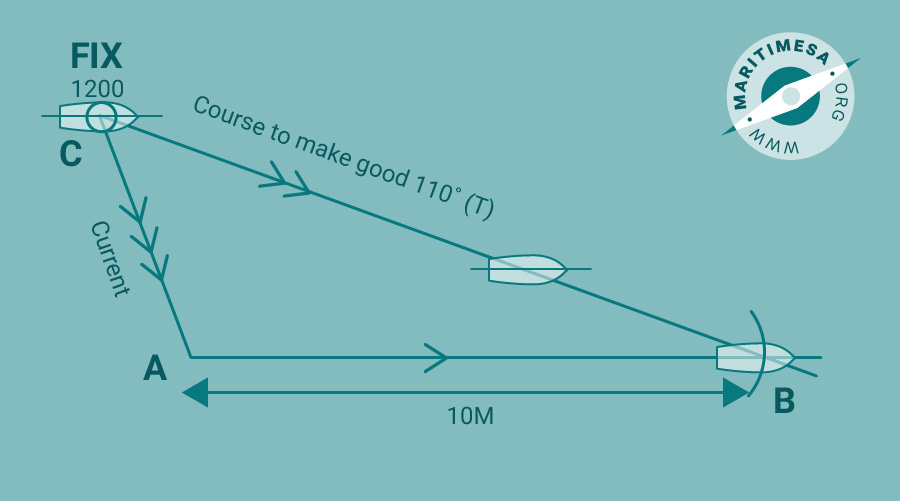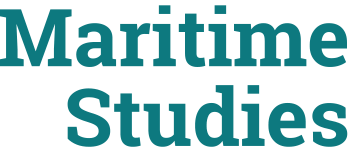The following example is used to explain the procedure to follow:
Problem:
A vessel steaming at 10 knots wishes to make good a course of 110° (T) from its 1200 position. Find the course to steer allowing for a current setting 170° (T) at 2 knots.
Solution:
- Plot the 1200 position on the chart.
- Lay off the course to make good from this position.
- Plot the current vector, 170° (T) 2 miles, from the 1200 position.
- Using the end of the current vector as the centre (A), find out where a distance of 10 miles will cut the course made good (B).
- AB will be the course to steer from the 1200 fix to the B position.

Summary:
- The effective speed or speed made good (line BC) must be used to calculate ETA’s.
- The course steered must be used to convert abeam and relative bearings to true bearings.
- A more accurate result will be obtained if the ship’s speed and current had both been laid off for a longer period eg. 2 hours. If it were done, the length BC would have to be divided by two to give the speed made good. For most purposes, a one hour triangle is sufficient and less likely to lead to errors, unless the triangle is very small.
- When finding the course made good, when the course steered is given, the current is laid off at the end (the DR POSITION).
- When finding the course to steer, when the course made good is given, the current is laid off at the beginning (the OBSERVED POSITION).

